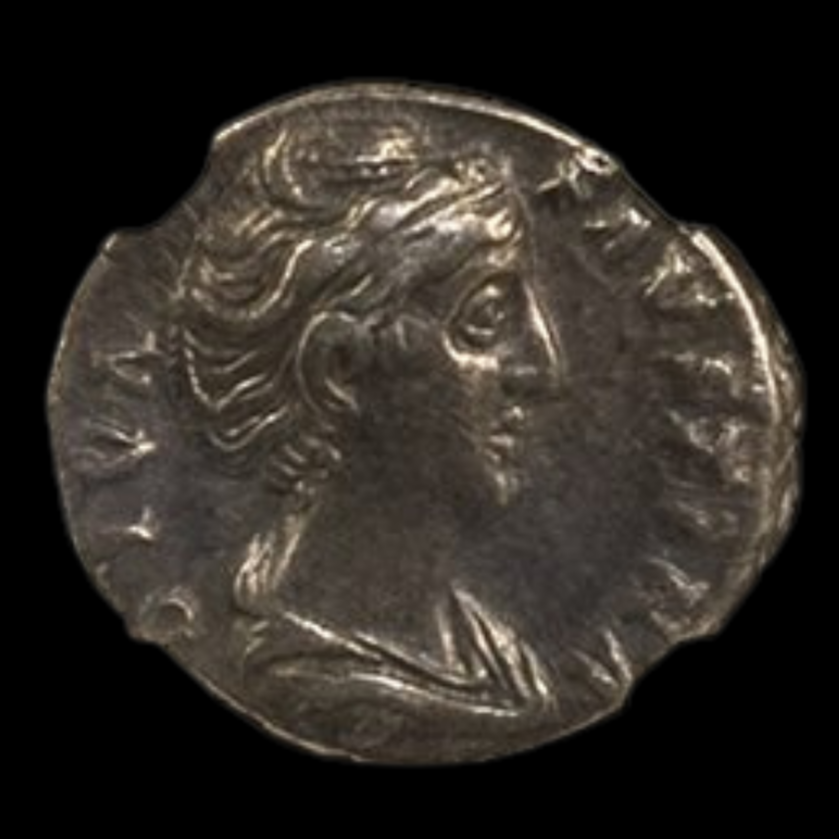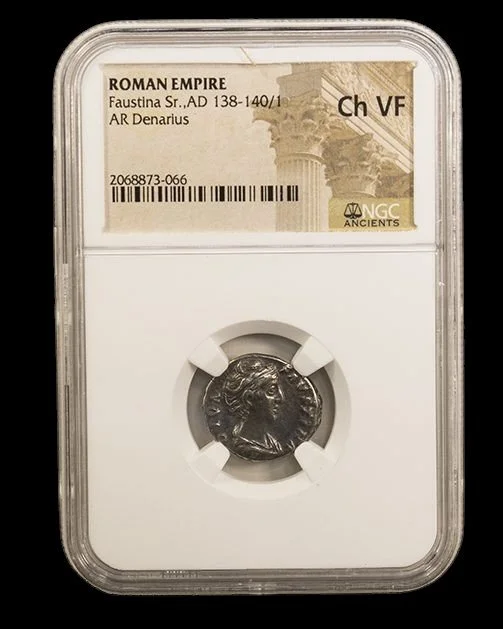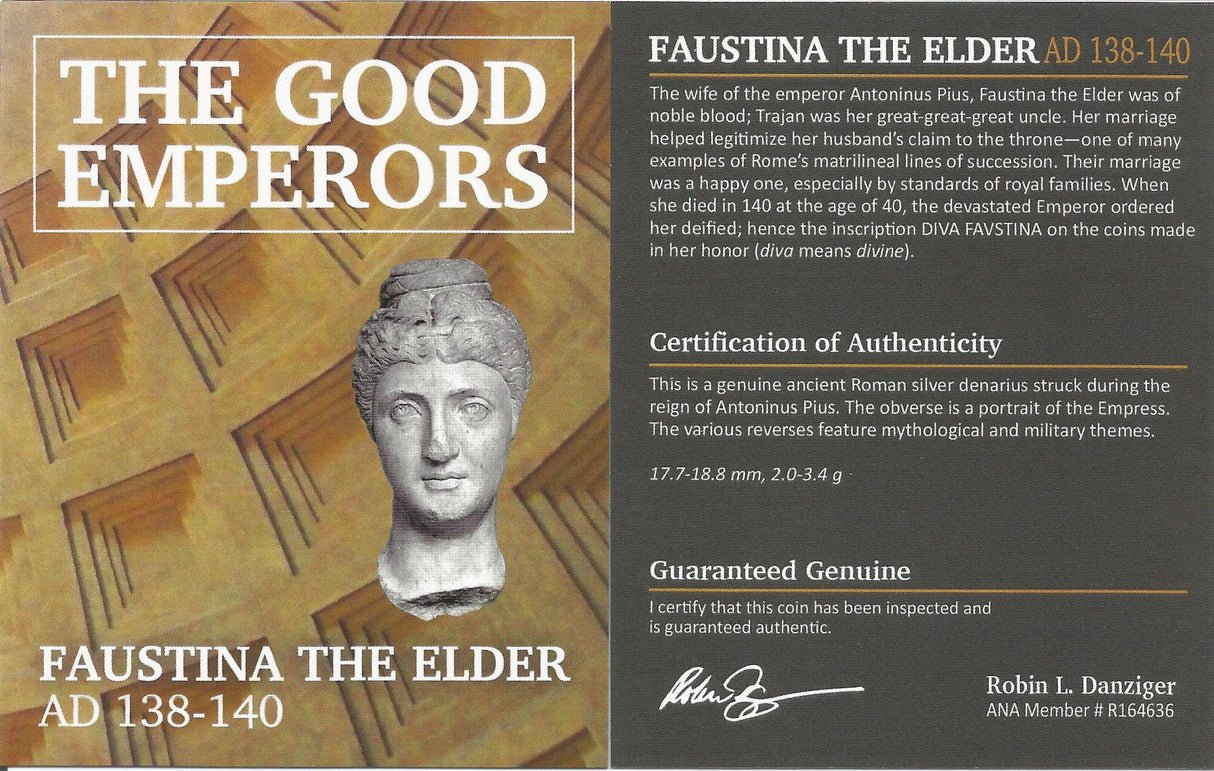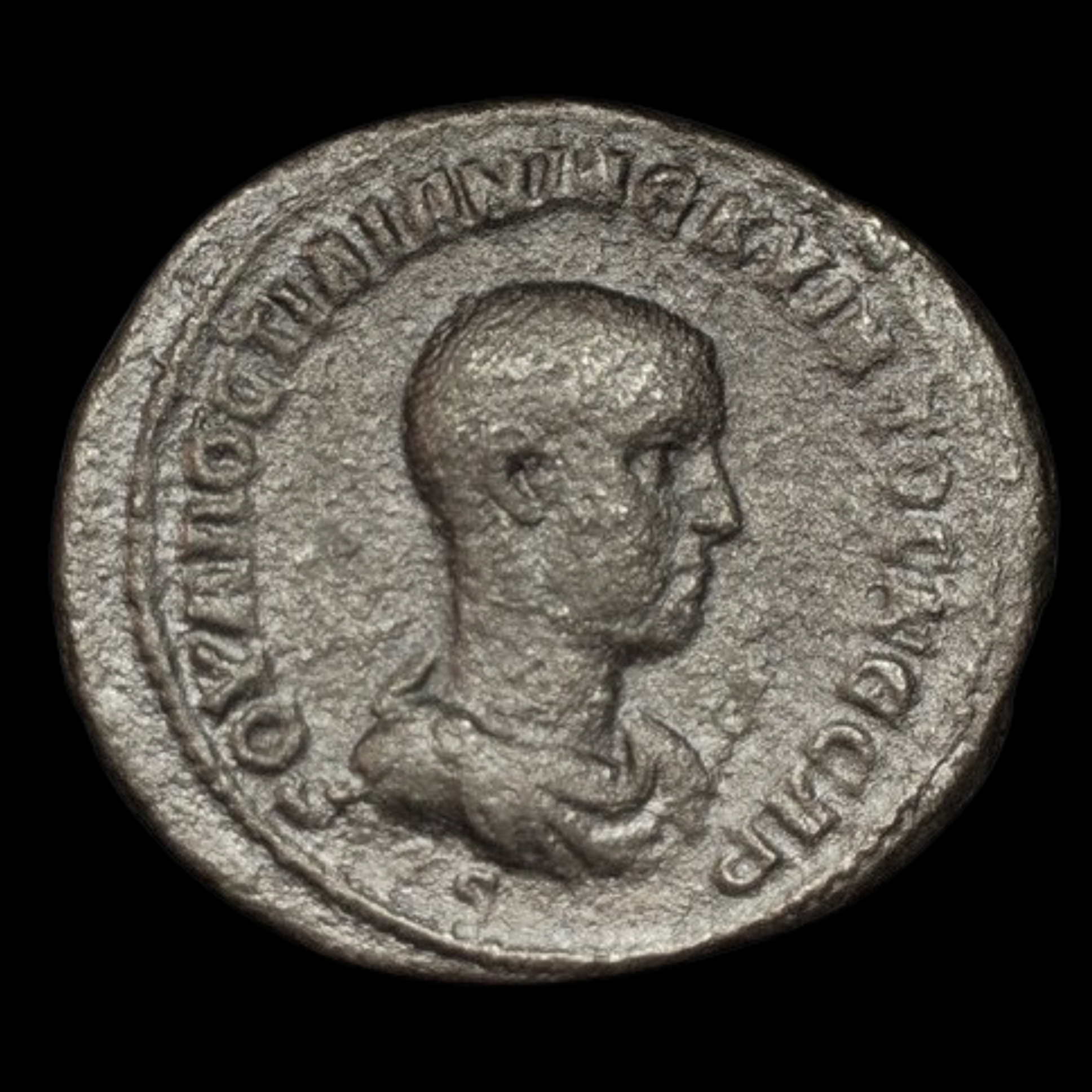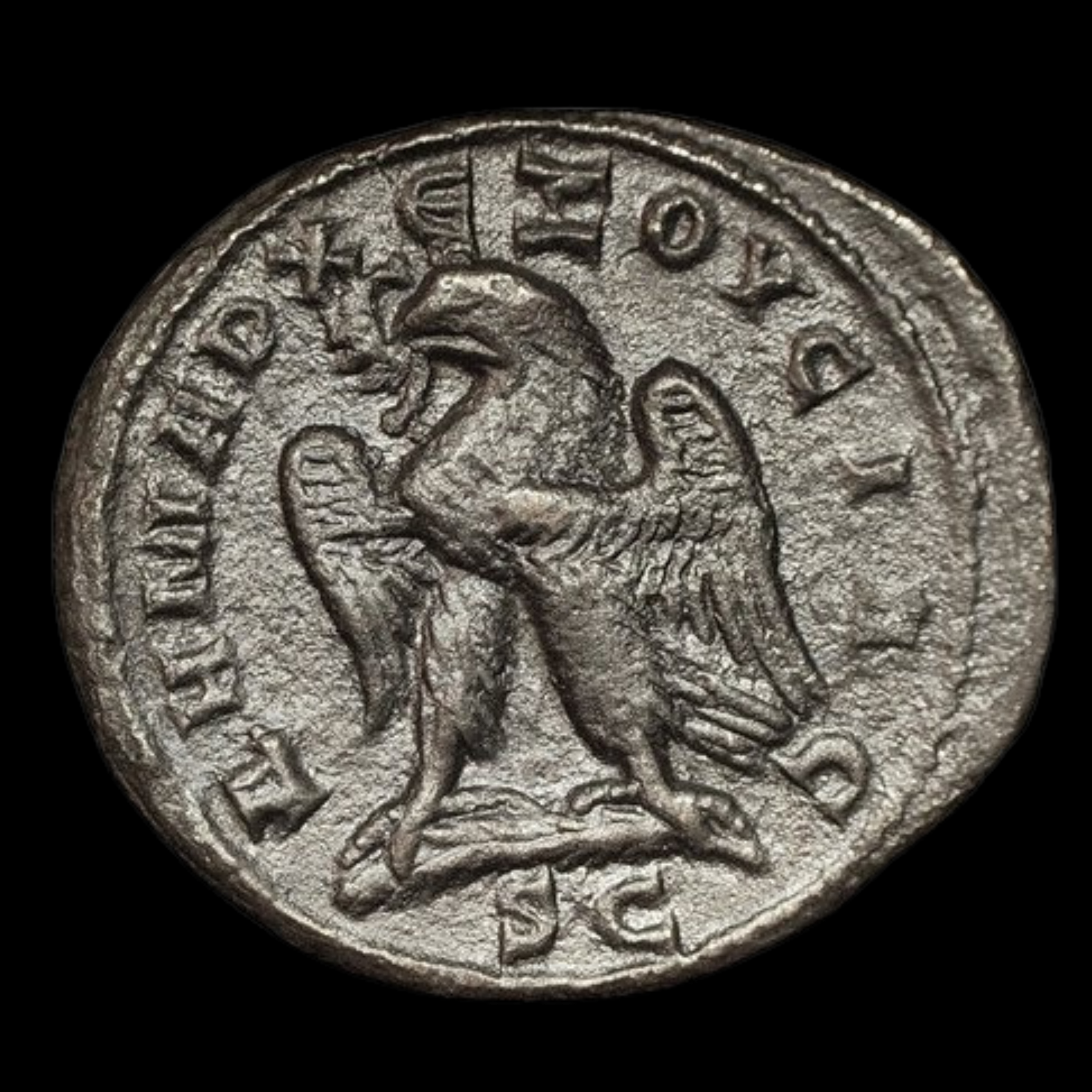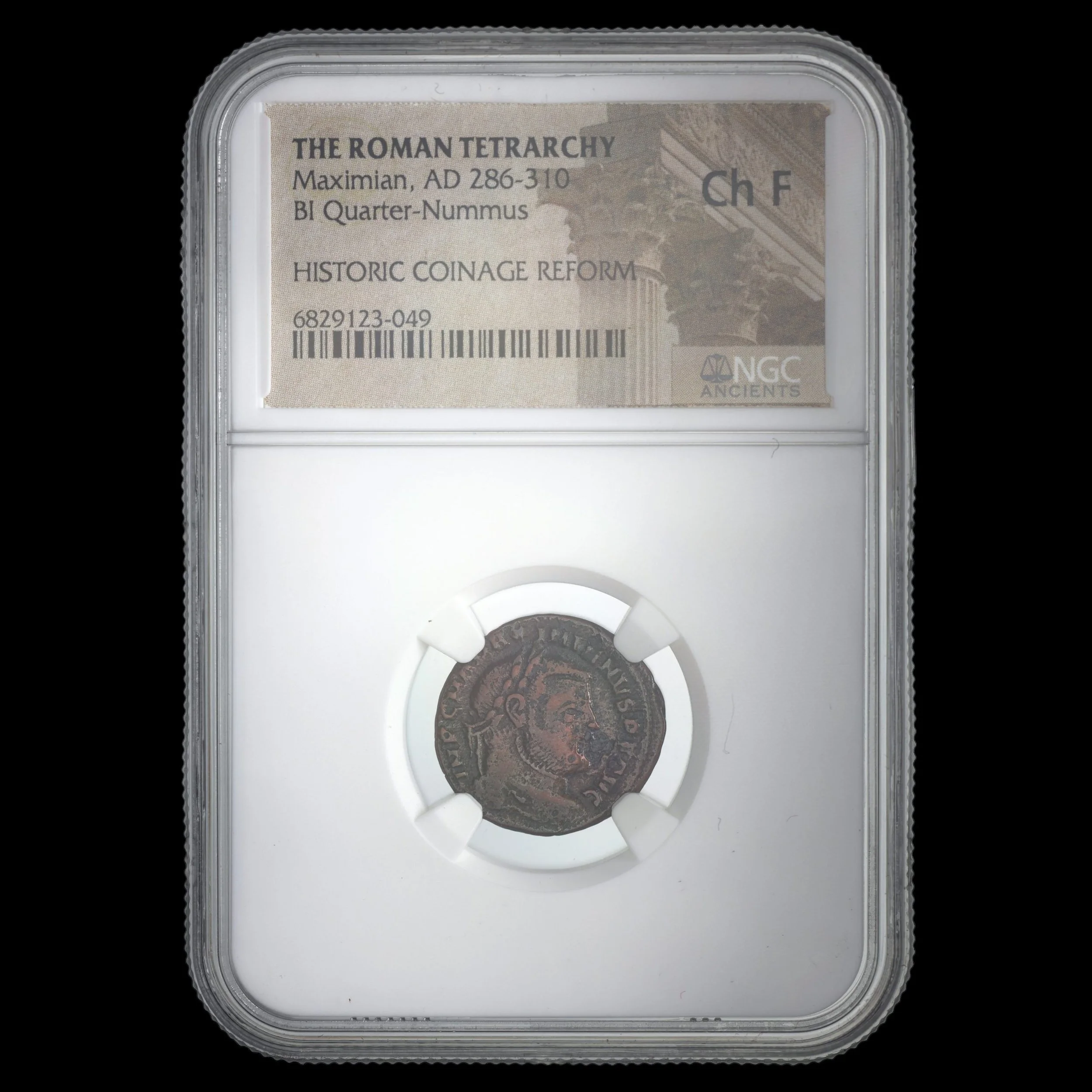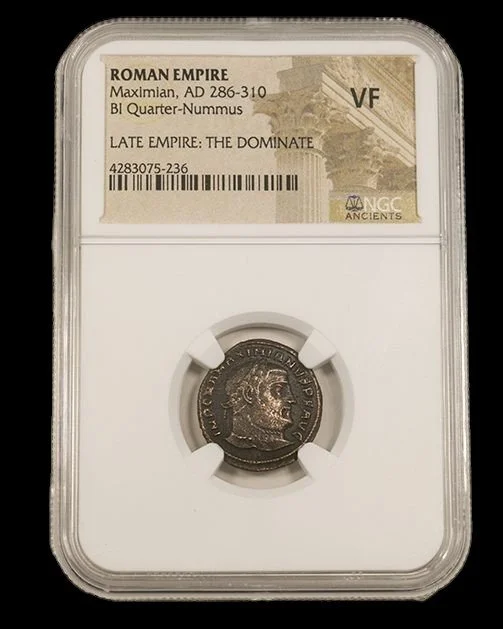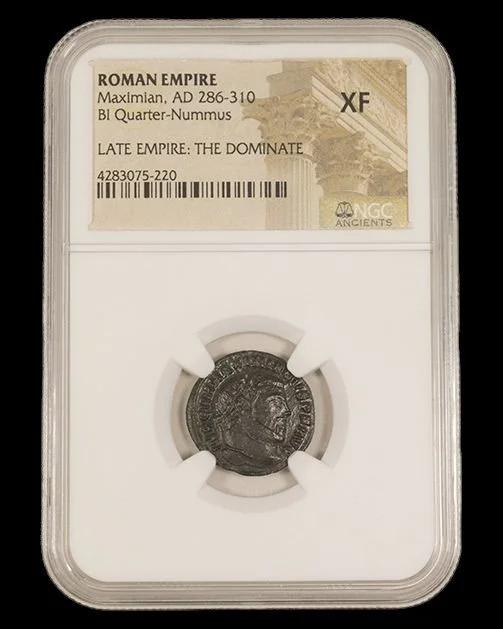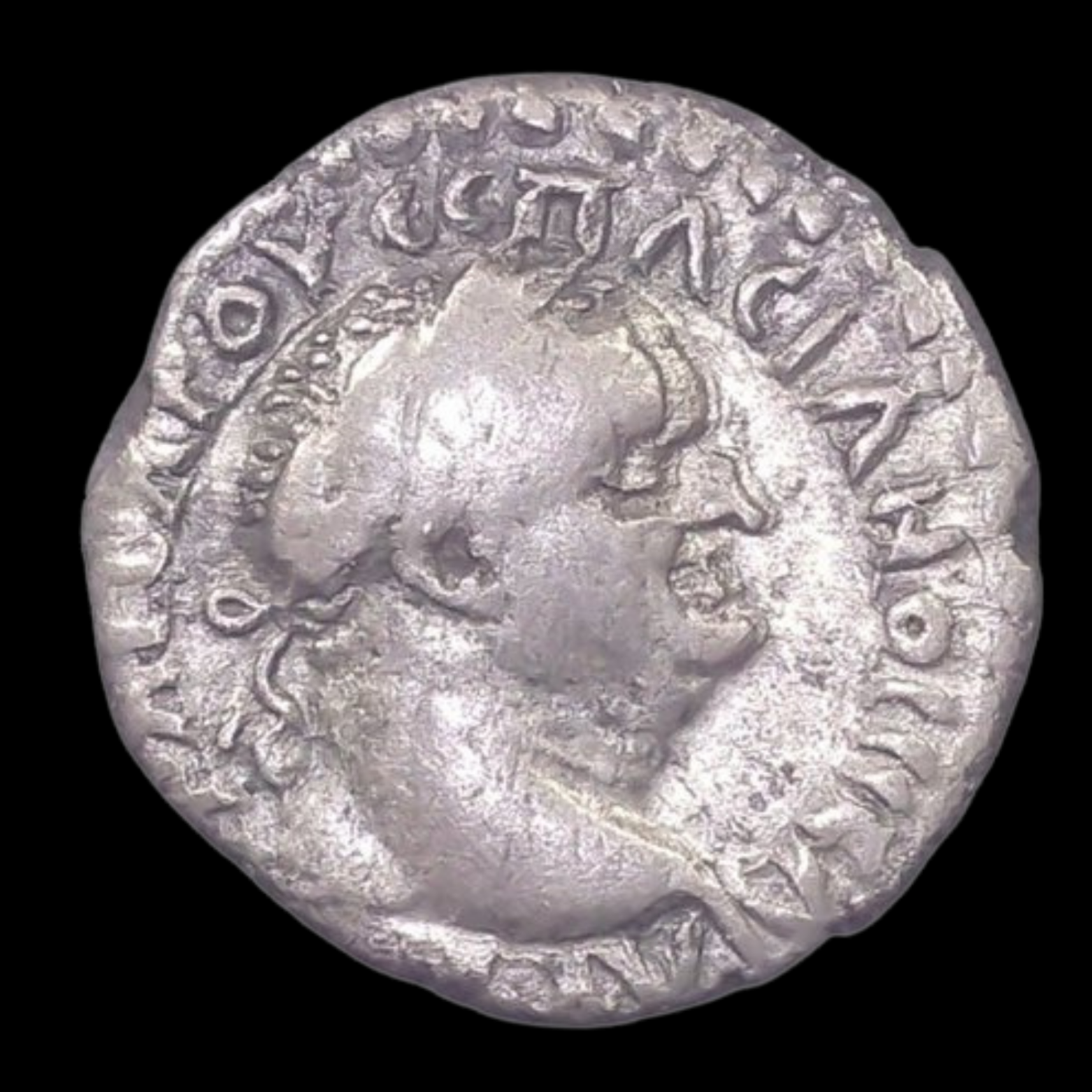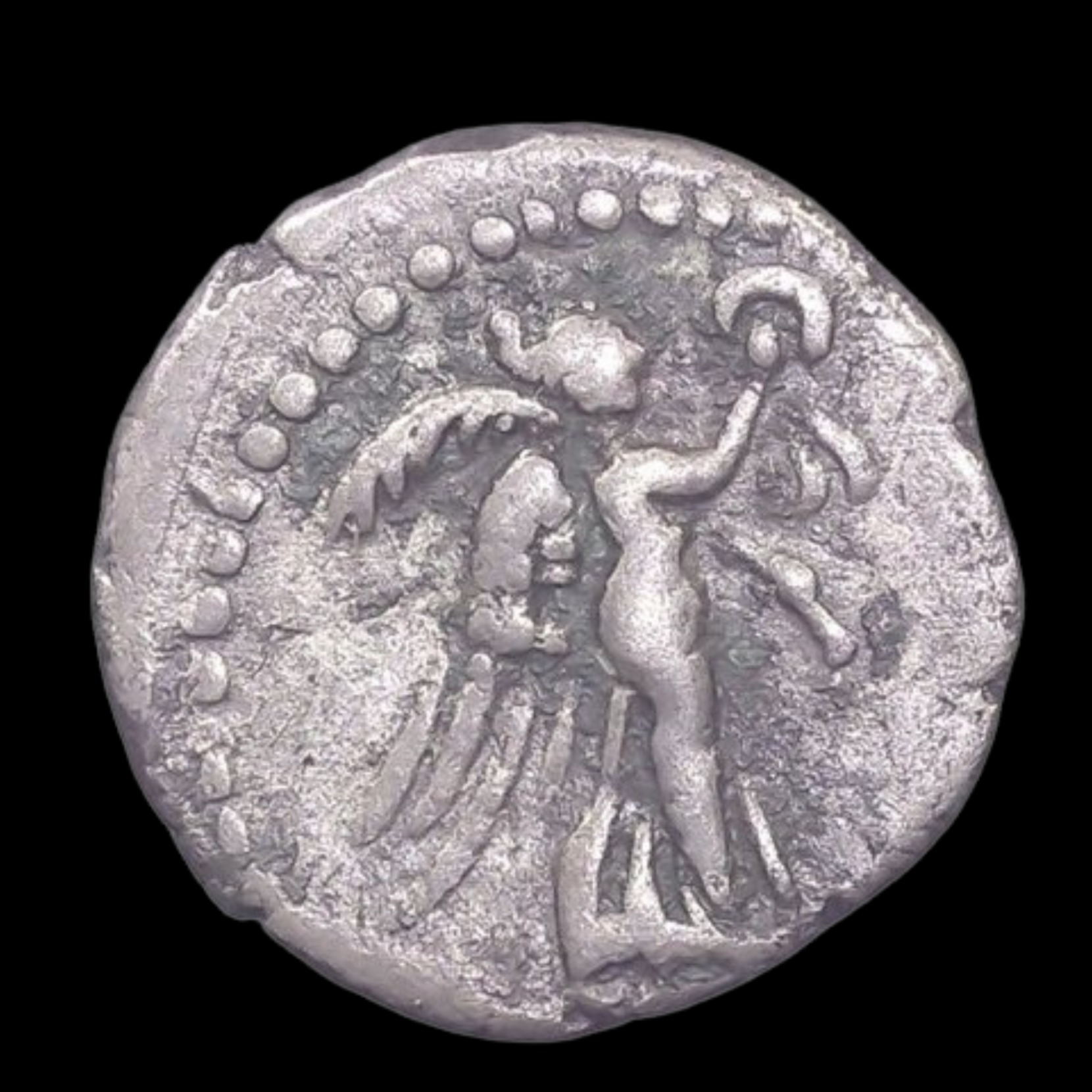 Image 1 of 8
Image 1 of 8

 Image 2 of 8
Image 2 of 8

 Image 3 of 8
Image 3 of 8

 Image 4 of 8
Image 4 of 8

 Image 5 of 8
Image 5 of 8

 Image 6 of 8
Image 6 of 8

 Image 7 of 8
Image 7 of 8

 Image 8 of 8
Image 8 of 8









Roman Bronze Coin – Emperor Constantine the Great (about 1,700 years old) – Rome’s First Christian Emperor – NGC Certified
The coins shown are representative examples of the grade and type, but not the actual specimens for sale. For details on NGC’s grading standards and definitions, please refer to our NGC Grading page.
This bronze coin depicts Constantine I, one of the most influential and transformative emperors in Roman history who fundamentally altered the empire's trajectory by legalizing and eventually adopting Christianity as the favored religion. The coin's inscription "Jovi Conservatori" (Jupiter the Protector) reflects the religious complexity of the early 4th century when traditional Roman religious imagery was still being utilized even as the empire was beginning its transition toward Christianity.
Coin Description:
Front side: Portrait of Emperor Constantine I facing right, likely wearing either a laurel wreath or diadem, with Latin inscription stating his name and titles
Back side: Depiction of Jupiter, king of the Roman gods, with the Latin phrase "IOVI CONSERVATORI" (Jupiter the Protector or Preserver)
Technical Details:
Bronze composition
Denomination: Follis or reduced follis (standard bronze coin of the period)
NGC certified
Minted during Constantine's reign (306-337 AD)
Condition as certified by NGC
Historical Significance: Constantine the Great fundamentally reshaped the Roman world through his military, political, and especially religious policies. Born in Naissus (modern Niš, Serbia) and proclaimed emperor by his troops in Britain, Constantine eventually unified the empire under his sole rule after defeating various rivals. While the "Jovi Conservatori" reverse type seems to contradict Constantine's Christian conversion, it actually demonstrates the gradual nature of religious change in the empire. Early in his reign, Constantine maintained traditional imagery on his coinage to appeal to the largely pagan population and army. After his vision and victory at the Milvian Bridge in 312 AD, Constantine increasingly favored Christianity, though he wasn't baptized until shortly before his death in 337 AD. Beyond his religious significance, Constantine established Constantinople as the new imperial capital, reformed the currency system, reorganized the military, and created a governmental model that would influence European and Middle Eastern history for centuries.
The coins shown are representative examples of the grade and type, but not the actual specimens for sale. For details on NGC’s grading standards and definitions, please refer to our NGC Grading page.
This bronze coin depicts Constantine I, one of the most influential and transformative emperors in Roman history who fundamentally altered the empire's trajectory by legalizing and eventually adopting Christianity as the favored religion. The coin's inscription "Jovi Conservatori" (Jupiter the Protector) reflects the religious complexity of the early 4th century when traditional Roman religious imagery was still being utilized even as the empire was beginning its transition toward Christianity.
Coin Description:
Front side: Portrait of Emperor Constantine I facing right, likely wearing either a laurel wreath or diadem, with Latin inscription stating his name and titles
Back side: Depiction of Jupiter, king of the Roman gods, with the Latin phrase "IOVI CONSERVATORI" (Jupiter the Protector or Preserver)
Technical Details:
Bronze composition
Denomination: Follis or reduced follis (standard bronze coin of the period)
NGC certified
Minted during Constantine's reign (306-337 AD)
Condition as certified by NGC
Historical Significance: Constantine the Great fundamentally reshaped the Roman world through his military, political, and especially religious policies. Born in Naissus (modern Niš, Serbia) and proclaimed emperor by his troops in Britain, Constantine eventually unified the empire under his sole rule after defeating various rivals. While the "Jovi Conservatori" reverse type seems to contradict Constantine's Christian conversion, it actually demonstrates the gradual nature of religious change in the empire. Early in his reign, Constantine maintained traditional imagery on his coinage to appeal to the largely pagan population and army. After his vision and victory at the Milvian Bridge in 312 AD, Constantine increasingly favored Christianity, though he wasn't baptized until shortly before his death in 337 AD. Beyond his religious significance, Constantine established Constantinople as the new imperial capital, reformed the currency system, reorganized the military, and created a governmental model that would influence European and Middle Eastern history for centuries.


